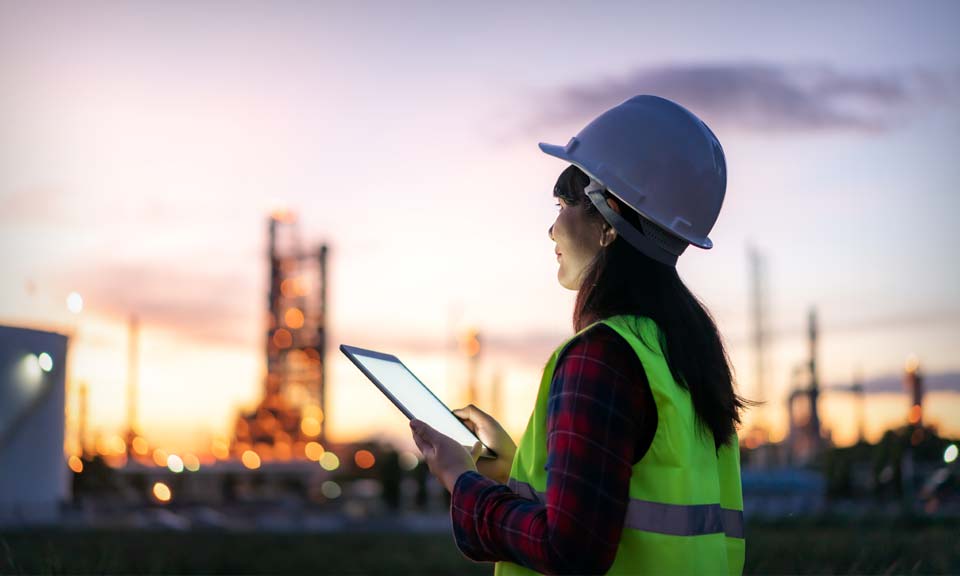Asia petrochemicals: Key market indicators for June 13-17

A number of Asian petrochemical markets were expected to be supported over June 13-17 by persistently high feedstock costs and tight supply.
A flurry of arbitrage cargoes from Asia to the US and Europe due to wide price gaps were also expected to lend support, although this was likely to be countered by demand concerns, a stronger US dollar and inflation fears adding downward pressure.
** Asian toluene prices were seeing continued strength from strong buying interest from gasoline blenders in Southeast Asia, trading sources said. The rise in MTBE prices has further increased interest in toluene as its price continues to lag behind other solvents and mixed xylenes, industry sources said.
** The FOB Korea toluene marker extended its nine-year high to $1,300/mt June 10 while the FOB US Gulf price assessment was 703 cents/gal ($2,143/mt), resulting in a wide price spread of $843/mt between the two regions.
** Asian toluene prices enter the June 13-17 week at an all-time high against naphtha, with the spread between the two hitting $489.13/mt June 10 amid tight toluene supply and weak naphtha demand.
** The Asian MTBE FOB Singapore marker has been on an uptrend on the back of lucrative MTBE blending values amid bullish upstream crude and gasoline markets. The MTBE gasoline blending value was estimated at $322.51/mt June 10, according to S&P Global Commodity Insights data, softening from a near nine-year high of $377.63/mt on May 27, but still at a level deemed lucrative by the market.
** Malaysia's Pengerang Refining and Petrochemical, or PRefChem, restarted the 750,000 mt/year MTBE plant at its integrated RAPID refinery complex in Johor in early June after postponing earlier plans to restart it in the first quarter, a source close to the company said June 7. The plant was currently ramping up run rates, the source said, without providing further details. The MTBE plant was taken offline in March 2020 after full operations had been delayed since its startup in April 2019 due to glitches, including fires, at the integrated refinery.
** The Asian methanol market was seen long over June 13-17 as ample supply from Iran and the Middle East cargoes continued to weigh on prices. Shipping inquiries for around 100,000 mt of methanol loading from Saudi Arabia, Qatar and Oman in June to China, Taiwan and South Korea were heard in the week to June 10.
** However higher global crude oil prices and feedstock coal prices in China will cap the downside, and prices were expected to remain elevated in the near term as oil refineries globally grapple with the loss of Russian crude, market sources said.
** The Asian propylene market was expected to receive some support over June 13-17 from an increase in demand after lockdown restrictions in Shanghai were eased June 1. Some sellers said it would take time for the propylene market to recover fully, but increases in run rates by downstream producers was likely to lend some support in the near term.
** Propylene was assessed up $5/mt week on week at $1,030/mt CFR China June 10.
** After a week of cautious optimism, polypropylene market sentiment in China could be impacted by reports June 13 that authorities had reimposed some COVID-19 restrictions in several districts of Shanghai and Beijing, market sources said. Any bearish sentiment was expected to have a knock-on effect on prices in Southeast Asia as overall demand continues to lag.
** Recycled PET prices enter the June 13-17 trading week on a stable note as producers find it difficult to pass on higher production costs by raising prices amid buyer cautiousness and general stagflation. Bale supply remains tight, while export opportunities remain open between Southeast Asia and Europe.
News
Geopolitical pressures — including rising resource nationalism and a year in which over 50% of countries will be having elections — as well as inflationary pressures have sent energy transition progress into “discord.” A specialty chemicals panel session held March 19 at the World Petrochemical Conference by S&P Global in Houston, Texas, tracked the challenges and opportunities of the energy transition for the industry. Speaking at the session, Roman Kramarchuk, head of climate markets and policy analytics at S&P Global Commodity Insights, said that if the short-term scenario continues, global temperatures could rise 2.4 degrees Celsius by 2100, far above the Paris Agreement’s goal of a 1.4-degree increase. “Over the past few years, we’ve certainly been trending more towards our ‘discord’ scenario,” Kramarchuk said. “We’re trending toward a longer runway for fossil fuels and less [greenhouse gas (GHG)] emission reductions. This is a case of less GDP growth, less trade and less technology transfer.” Since 1990, world GHG emissions have grown 45%, with mainland China, India and the Middle East representing the biggest increases in emissions, at 304%, 241% and 181%, respectively. Over the last 25 years, the Commonwealth of Independent States and the EU have cut their emissions the most, with decreases of 39% and 31%, respectively. The US has cut emissions 1% since 1990. Of S&P Global Commodity Insights’ three energy and climate scenarios, only one, “green rules,” has global temperatures near the Paris Agreement’s 1.5-degree goa, with an expected increase of 1.7-degrees Celsius by 2100l. The “green rules” scenario, however, assumes more technology transfer, cooperation and policy-driven outcomes than is currently happening. “2030 is not that far away,” Kramarchuk said, “and when you think about what the energy transition will take, solar panels can be constructed fast, but anything beyond that — like an onshore or offshore wind plant or a nuclear unit — we’re getting into lead times of 5, 10, or 20 years.” While the US Inflation Reduction Act has helped speed these transformational energy products along, there are still a lot of slowdowns in permitting, especially in Europe. “We joke that there needs to be a ‘Complexity Reduction Act’ in Europe to move things forward,” Kramarchuk said. Harald Schwager, deputy chairman of Evonik Industries AG’s executive board, added that companies are stuck in a hard place. Evonik has signed power purchase agreements (PPAs) to be powered fully by renewable energy by 2030. “The question will be, will production capacity be hampered by the regulatory process and will we have sufficient infrastructure in place to transport enough renewable power for site demand by then,” Schwager said. Distant peaks Commodity Insights’ energy and climate base case pegs the peak years for coal, oil and gas demand to be 2022, around 2030 and 2040, respectively. “When there is a surprise need for energy,” Kramarchuk said, pointing toward the COVID-19 pandemic and a drought in China, which caused a boost in coal usage, “fossil fuels fill that need.” However, “there’s more investment in renewable capacity than we’re seeing in upstream oil and gas,” Kramarchuk said. Under all scenarios, renewable electricity will be the lion’s share of newly generated energy sourcing. Rebecca Liebert, president and CEO of Lubrizol Corp., said that it is the duty of specialty chemical producers to be agile and proactive in bringing innovative and more sustainable products to market. “Political and technical factors are all things we must account for in our bring-to-market timelines. And we get it right a lot of times, but we get it wrong some of the time. Sometimes you get to market before the market is ready for your product. And I think that’s great, to have a solution on the shelf as the market comes along.” Schwager agreed: “In the specialty chemical industry, we have more good ideas than we have money. And there’s no regret on moves for improved efficiency.” While there has been little movement on target setting and market-based mechanisms for growing renewable energy, COP28’s first global stocktake committee called for “countries to contribute to triple global renewable energy capacity and double global energy efficiency by 2030.” “Even though we are heading for the discord path right now, with all the technology solutions and innovation pushes, we’ll be shooting up ahead towards the ‘green rules’ scenario in the long-term,” Kramarchuk concluded. This article was first published in chemweek.com .

News
Two NGOs appealing against permits Initial plan was to start end of 2023 BASF is facing a delay of the operational start of its newly built precursor cathode active materials (pCAM) plant in Finland due to two non-governmental organizations (NGOs) appealing against already-granted permits, a spokesperson for the German petrochemicals company confirmed to S&P Global Commodity Insights Feb. 27. BASF initially aimed to start commercial production at the Harjavalta plant at the end of last year. “The necessary permit to operate this plant has been granted last year by the relevant authorities,” the spokesperson said. “However, two NGOs have filed an appeal against the already granted permit. Next steps and timing will depend on the furtherance of the judicial process before the Vaasa Administrative Court,” said the spokesperson. The pCAM plant will use renewable energy resources, including hydro, wind and biomass-based power and will be supplied with nickel and cobalt from Nornickel’s adjacent refinery. The plant is part of BASF’s plan to supply the battery industry and subsequently automotive industry with lower carbon emission cathode active material. Platts, part of S&P Global Commodity Insights, assessed cobalt metal in-warehouse Rotterdam at $15/lb on Feb. 26, stable from the previous assessment Feb. 23, while the nickel-cobalt black mass EXW Europe payables was at 54% Feb. 26, also stable.

News
The petrochemical landscape has been transformed in recent years by new technologies and the global energy transition, resulting in numerous production pathways and the development of more sustainable products. S&P Global Commodity Insights has created Chemical Connections , an interactive chart which shows the links between chemicals, from upstream feedstocks to derivative products. The second slide offers a map showing our price assessments and benchmarks for chemicals across the value chain around the world. These prices are used by market participants daily to write contracts, monitor their markets and achieve full transparency around transactions.